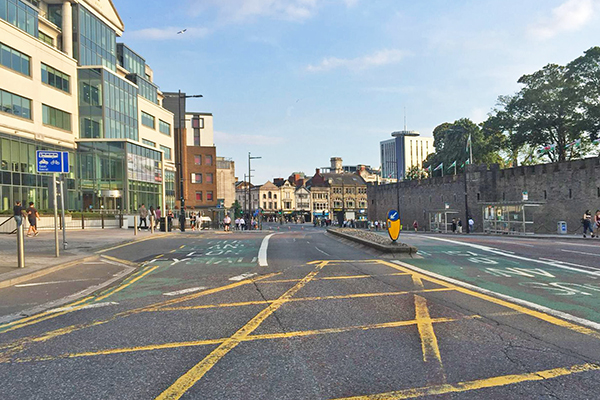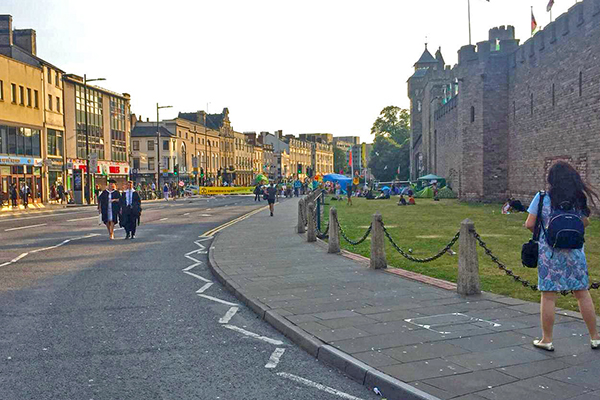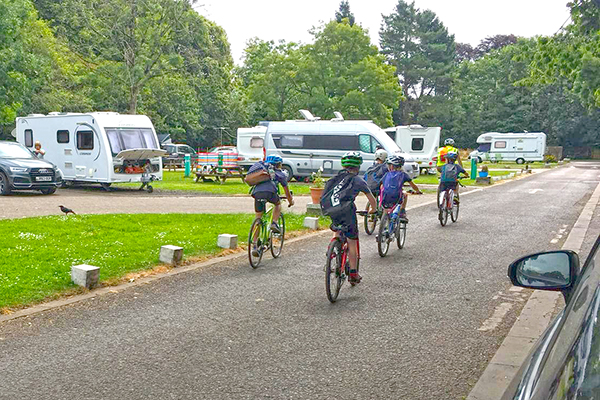Bike Strategy / Cycle culture / Cycling / Cycling infrastructure / Mobility / Public Spaces / Urban Mobility Design
From Cardiff to Bikediff
It is pretty common knowledge that us “Dutchies” love to ride our bicycles, doing so more than any other country. The moments that I have been studying, working or enjoying my holidays abroad underline just how common cycling is in the Netherlands. But they also provide me with new inspiration, innovative ideas and moments of reflection on how to keep our cities accessible and livable for all.

Therefore, it is often impossible not to focus on bicycle infrastructure, usage and facilities during these moments travelling outside the Netherlands. While many people living in non-Dutch cities can feel like their society will never be able to meet Dutch standards, around the world, the need to transition towards healthier, environmentally friendly and efficient use of (urban) space is on the rise.
As an example, we need to only look across the North Sea to the United Kingdom, where last week’s protests by the Extinction Rebellion in five major cities stopped traffic by using colourful floats. In the Welsh capital, protestors blocked Cardiff’s main thoroughfare (with the exception of emergency vehicles) for a couple of days. Castle Street is notoriously congested, so it should not be surprising that the first day of the closure resulted in a lot of people being inconvenienced during their daily commute. What was interesting to see, however, was that Cardiff residents and visitors were fast to adapt to the temporary situation, eventually adjusting their route and calmly carrying on.

Figures show that last year walking and cycling were on the rise as modes of transport in Cardiff, with car use decreasing. At the same time, Cardiff is one of UK’s fastest-growing cities. Therefore, daily congestion needs to be tackled and the transport system is a top priority. The city is currently expanding the existing Cycle Network, addressing safety issues and promoting cycling by engaging the public. The Cardiff Cycling Strategy (2016-2026) plans for cycling to make an important contribution to Cardiff becoming the most livable capital city in Europe.
Castle Street, which was blocked for 2.5 days for the protest, is on the City’s list for an upgrade and redesign to stimulate the use of active travel. The street closure provided a taste of what things could be like when cyclists and pedestrians are prioritized over car usage. Having studied at Cardiff University, I feel fortunate to have had the opportunity to experience changes like these to the bicycle infrastructure–and the people using it–in the capital of Wales over the last few years.

Being back in Cardiff to attend my graduation ceremony, which coincided with the Extinction Rebellion protests, underlined my belief that we can contribute to changing every place in the world to a more environmentally friendly, livable and healthy environment. Increasing active modes of transport doesn’t just contribute to the reduction of greenhouse gas emissions, but it is a nice consequence of it.
At Mobycon, we have years of national and international experience of projects to accommodate the use of more sustainable modes of transport. Feel free to connect or get in contact with me or any of my colleagues and chat about how to make our cities less dependent on the car!

